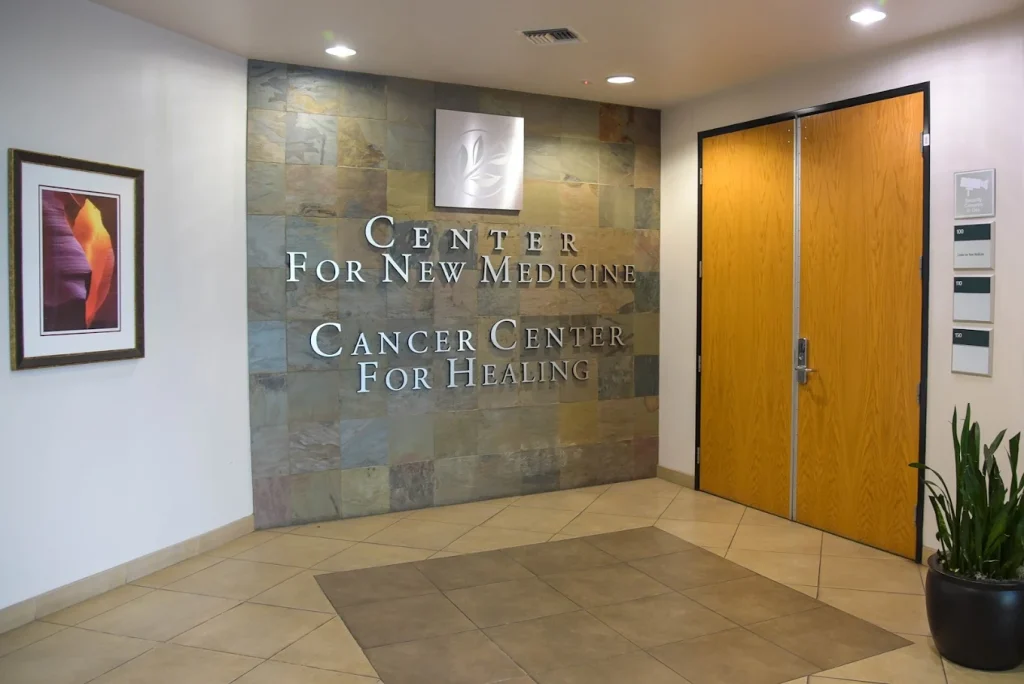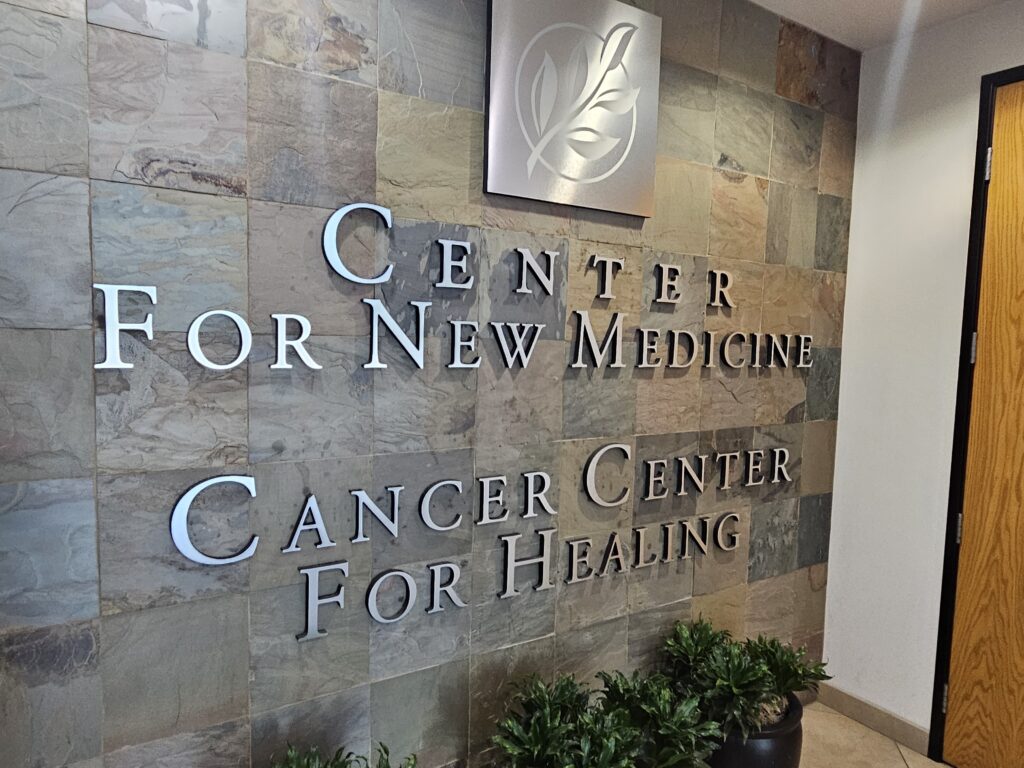When it comes to blood cancers, leukemia, lymphoma, and myeloma are the three most common types. Despite sharing similarities, these diseases have distinct characteristics and require unique approaches to treatment. This comprehensive guide will explore the differences between leukemia vs lymphoma vs myeloma, as well as their symptoms, causes, treatment options, and prognosis.
Key Takeaways:
- Leukemia, lymphoma, and myeloma are the most common types of blood cancers.
- Each disease has distinct characteristics and requires unique treatment approaches.
- Understanding the differences between these diseases is important for diagnosis and treatment planning.
What is Leukemia?
Leukemia is a type of blood cancer that affects the bone marrow and blood cells. It is characterized by the rapid production of abnormal white blood cells, which do not function properly and inhibit the normal growth of healthy cells.
Leukemia can develop in any age group, though it is more commonly diagnosed in adults aged 55 years and older. Symptoms of leukemia may include fatigue, weakness, recurrent infections, fever, weight loss, and swollen lymph nodes.
There are four main types of leukemia, categorized by the type of white blood cells that are affected: acute lymphoblastic leukemia (ALL), chronic lymphocytic leukemia (CLL), acute myeloid leukemia (AML), and chronic myeloid leukemia (CML).
Diagnosis of leukemia typically involves a physical examination, blood tests, and a bone marrow biopsy. Treatment options for leukemia include chemotherapy, radiation therapy, stem cell transplantation, targeted therapy, and biologic therapy. The specific treatment plan will depend on the type and stage of leukemia, as well as the patient’s overall health and preferences.
What is Lymphoma?
Lymphoma is a type of blood cancer that affects the lymphatic system, which is responsible for fighting off infections and diseases. The lymphatic system consists of lymph nodes, bone marrow, spleen, and thymus gland. When lymphoma occurs, abnormal cells called lymphocytes begin to grow and divide uncontrollably, causing tumors to form in various parts of the body.
There are two main types of lymphoma: Hodgkin lymphoma and non-Hodgkin lymphoma. Hodgkin lymphoma is less common and is characterized by the presence of Reed-Sternberg cells, while non-Hodgkin lymphoma includes a large number of different subtypes, each with unique characteristics and treatment options.
The causes of lymphoma are not well understood, but research suggests that certain risk factors, such as exposure to certain chemicals or radiation, a weakened immune system, or a family history of lymphoma, can increase the likelihood of developing the disease.
What is Myeloma?
Myeloma, also known as multiple myeloma, is a type of blood cancer that affects the plasma cells in bone marrow. Plasma cells are responsible for producing antibodies that help fight infections, but in myeloma, these cells become cancerous and produce abnormal proteins called M proteins. These proteins, along with other factors, can cause damage to bones and other organs.
Treatment options for myeloma depend on the stage and severity of the disease. Some common treatments include chemotherapy, radiation therapy, targeted therapy, and stem cell transplantation. Patients may also benefit from holistic care, which can help manage symptoms and improve overall well-being during treatment.
| Treatment Options: | Benefits: |
|---|---|
| Chemotherapy: | Kills cancer cells throughout the body. |
| Radiation therapy: | Uses high-energy radiation to target cancer cells in specific areas of the body. |
| Targeted therapy: | Targets specific genes or proteins that are involved in cancer growth. |
| Stem cell transplantation: | Replaces diseased bone marrow with healthy stem cells, which can then develop into normal blood cells. |
At Cancer Center for Healing, patients with myeloma benefit from a comprehensive approach to care that includes both conventional and holistic treatments. Dr. Leigh Erin Connealy and her team work with each patient to develop a personalized treatment plan that addresses their unique needs and concerns.
Symptoms and Diagnosis
Although leukemia, lymphoma, and myeloma are all blood cancers with similar symptoms, their diagnostic methods can differ significantly. A definitive diagnosis is usually made through a combination of physical examination, laboratory tests, and imaging studies.
Leukemia symptoms include abnormal bleeding, fatigue, frequent infections, and unexplained weight loss. Lymphoma symptoms include swollen lymph nodes, fatigue, fever, and unexplained weight loss. Myeloma symptoms include bone pain, fatigue, anemia, and frequent infections.
Symptoms Comparison:
| Leukemia | Lymphoma | Myeloma | |
|---|---|---|---|
| Symptoms | Abnormal bleeding, fatigue, frequent infections, unexplained weight loss | Swollen lymph nodes, fatigue, fever, unexplained weight loss | Bone pain, fatigue, anemia, frequent infections |
It is essential to seek medical attention if any of these symptoms are present. Diagnostic tests may include blood tests, biopsies, imaging studies, and bone marrow aspiration.
In cases of leukemia, a bone marrow biopsy and aspirate is usually required to determine the type of leukemia and its severity. Lymphoma can be diagnosed through a lymph node biopsy or a biopsy of affected tissue. Myeloma is usually diagnosed through a combination of laboratory tests, imaging studies, and bone marrow biopsies.
Early diagnosis is crucial for effective treatment and improved prognosis. Therefore, any potential symptoms should be reported to a healthcare professional immediately.
Treatment Options
Leukemia, lymphoma, and myeloma are all blood cancers with different treatment options. Treatment is determined by many factors, including the type of cancer, stage of the disease, and overall health of the patient.
Traditional treatments for blood cancer often involve chemotherapy, radiation, and stem cell transplantation. While these treatments can be effective, they often come with harsh side effects that can be difficult for patients to manage.
At Cancer Center for Healing in Irvine, CA, patients with blood cancer have access to a range of holistic treatment modalities. These treatments are designed to support the body’s natural healing processes and minimize side effects associated with traditional treatments.
Holistic Treatment Modalities
Some of the holistic treatment modalities offered at Cancer Center for Healing include:
| Treatment Modality | Description |
|---|---|
| IV Vitamin C Therapy | High doses of vitamin C are administered intravenously to support immune function and reduce inflammation. |
| Oxygen Therapy | Pure oxygen is delivered to the body to promote healing and fight cancer cells. |
| Nutrition Therapy | Patient-specific diets are created to provide the body with the nutrients it needs to function optimally and support the immune system. |
| Hyperthermia Treatment | The body is heated to a high temperature to eliminate cancer cells and support immune function. |
These treatment modalities are offered alongside traditional treatments like chemotherapy and radiation, providing patients with a comprehensive approach to cancer care.
Treatment Plans
At Cancer Center for Healing, each patient receives a personalized treatment plan that takes into account their unique needs and goals. Treatment plans may include a combination of traditional and holistic treatments, as well as targeted supplements and nutritional interventions.
Dr. Leigh Erin Connealy and her team work closely with each patient to monitor their progress and adjust their treatment plan as needed. The goal of treatment is to support the body’s natural healing processes and help patients achieve optimal health and wellness.
Prognosis and Survival Rates
The prognosis and survival rates for blood cancers can vary widely based on the individual case and the type of cancer. According to the American Cancer Society, the 5-year survival rates for common types of blood cancer are as follows:
| Type of Cancer | 5-Year Survival Rate |
|---|---|
| Acute lymphocytic leukemia (ALL) | 68% |
| Chronic lymphocytic leukemia (CLL) | 88% |
| Acute myeloid leukemia (AML) | 29% |
| Chronic myeloid leukemia (CML) | 70% |
| Non-Hodgkin lymphoma (NHL) | 72% |
| Hodgkin lymphoma (HL) | 86% |
| Multiple myeloma (MM) | 54% |
It is important to note that survival rates are estimates and can vary depending on numerous factors, including the stage of the cancer, age, overall health, and treatment options. Some individuals may have a more favorable prognosis while others may experience a more aggressive form of the disease.
It is recommended that individuals with symptoms or a family history of blood cancer speak with a healthcare professional for proper diagnosis and treatment options. Early detection and treatment can improve the chances of a positive outcome and better quality of life.
The Role of Holistic Care
While traditional medical approaches have been effective in treating blood cancers, more and more patients are seeking a comprehensive approach that includes holistic care. Holistic treatment modalities emphasize the importance of treating the whole person, including their mental, emotional, and spiritual well-being, in addition to their physical health.
At the Cancer Center for Healing in Irvine, CA, Dr. Leigh Erin Connealy takes a comprehensive approach to cancer care by incorporating both traditional and holistic treatment methods. Patients receive individualized treatment plans that consider their unique needs and preferences.
“We offer hope and options to patients who thought they had none,” Dr. Connealy explains.
Some of the holistic treatment modalities available at the Cancer Center for Healing include:
| Treatment Modality | Description |
|---|---|
| Nutritional Therapy | A personalized diet plan that is tailored to the patient’s unique needs and is designed to support overall health and immune function. |
| Intravenous Therapies | Nutrient-rich and immune-boosting infusions that help to support the body’s natural defenses and aid in the healing process. |
| Acupuncture | Ancient Chinese medicine practice that involves the insertion of needles into specific points on the body to promote balance and improve overall health. |
| Mind-Body Medicine | A variety of techniques, including meditation, visualization, and yoga, that help to reduce stress and promote relaxation, which can help to boost overall health and well-being. |
By incorporating these and other holistic treatment modalities into cancer care, Dr. Connealy and the team at the Cancer Center for Healing aim to provide patients with a comprehensive approach to cancer treatment that addresses their physical, emotional, and spiritual needs.
The Cancer Center for Healing
The Cancer Center for Healing in Irvine, CA, is dedicated to providing patients with a comprehensive approach to cancer care that includes both traditional and holistic treatment methods. Led by Dr. Leigh Erin Connealy, the center’s team of experts works with patients to develop individualized treatment plans that address their unique needs and preferences.
To learn more about the Cancer Center for Healing and schedule a consultation, call (949) 680-1880 or visit their website at www.cancercenterforhealing.com.
The Role of Holistic Care
While traditional treatment options for leukemia, lymphoma, and myeloma have proven to be effective for many patients, the Cancer Center for Healing in Irvine, CA offers a more comprehensive approach to cancer care. Led by renowned integrative medicine expert Dr. Leigh Erin Connealy, the Cancer Center for Healing incorporates holistic treatment modalities into their care plans.
According to Dr. Connealy, the key to successful cancer treatment is addressing the patient as a whole person, taking into account their physical, emotional and spiritual needs. This is why the Cancer Center for Healing offers a variety of holistic treatment options, including nutritional supplements, acupuncture, and mind-body therapies.
By incorporating these holistic approaches alongside traditional treatments, the Cancer Center for Healing aims to provide patients with the best possible outcomes. Research has shown that a comprehensive approach to cancer care can help reduce stress, improve immune function, and enhance overall well-being.
Schedule a Consultation
Those seeking comprehensive cancer care for leukemia, lymphoma, or myeloma can schedule a consultation with the Cancer Center for Healing in Irvine, CA. Dr. Leigh Erin Connealy and her team offer personalized treatment plans, including both traditional and holistic approaches.
To schedule an appointment, please call (949) 680-1880 or fill out the online contact form on their website. The Cancer Center for Healing is committed to providing compassionate care for those battling blood cancer.
Understanding Blood Cancer Differences
Leukemia, lymphoma, and myeloma are three types of blood cancer that affect the blood and bone marrow. While they share some similarities, each of these cancers has distinct characteristics that differentiate them from one another.
Leukemia is characterized by an overproduction of abnormal white blood cells, which can affect the body’s ability to fight infection. Lymphoma, on the other hand, is a type of blood cancer that affects the lymphatic system, which is responsible for filtering out harmful toxins and waste. Myeloma is a cancer that affects the plasma cells, a type of white blood cell that produces antibodies to help fight infections.
It’s important to note that while all three of these cancers affect the blood and bone marrow, they differ in terms of the specific cells and systems they impact. Understanding these differences is critical to accurately diagnosing and treating these diseases.
Insight into Types of Blood Cancer
There are several types of blood cancers, each with their distinctive characteristics and origins. The three main types of blood cancers are leukemia, lymphoma, and myeloma.
Leukemia
Leukemia is a type of blood cancer that affects the body’s white blood cells. It occurs when the bone marrow produces too many abnormal white blood cells, preventing them from fighting off infections. There are several types of leukemia, including acute lymphoblastic leukemia, chronic lymphocytic leukemia, acute myeloid leukemia, and chronic myeloid leukemia.
Lymphoma
Lymphoma is a type of cancer that affects the body’s lymphatic system, which is responsible for fighting infections. It occurs when lymphocytes, a type of white blood cell, grow out of control, forming tumors in the lymph nodes and other tissues. There are two main types of lymphoma: Hodgkin lymphoma and non-Hodgkin lymphoma.
Myeloma
Myeloma, also known as multiple myeloma, is a type of cancer that affects plasma cells, which are responsible for producing antibodies to fight infections. It occurs when abnormal plasma cells accumulate in the bone marrow and other parts of the body, interfering with the production of normal blood cells.
Other types of blood cancer include myelodysplastic syndrome, myeloproliferative neoplasms, and Waldenstrom macroglobulinemia. Each type of blood cancer requires a specific treatment plan, as the characteristics of the cancer can vary greatly.
Exploring Risk Factors and Prevention
Leukemia, lymphoma, and myeloma are complex diseases with various risk factors that may contribute to their development. The risk factors for these types of blood cancer may include:
- Exposure to radiation and certain chemicals, such as benzene
- A weakened immune system
- Genetic predisposition
- Previous cancer treatment, such as chemotherapy or radiation therapy
- Age
While there is no guaranteed way to prevent blood cancer, there are certain steps that may decrease the risk of developing these diseases, such as:
- Avoiding exposure to harmful chemicals
- Maintaining a healthy lifestyle, including a balanced diet and regular exercise
- Managing underlying medical conditions that may increase the risk of developing blood cancer
- Getting regular check-ups and cancer screenings
It’s important to note that even those who follow these preventative measures still may develop blood cancer. Therefore, it’s crucial to recognize the symptoms of these diseases and seek medical attention promptly if any are present. Early detection and treatment may improve outcomes and increase the likelihood of remission.
Promising Research and Future Directions
Current research on blood cancers is focused on developing new and more effective treatments, as well as improving the accuracy of diagnostic methods. One area of research involves identifying biomarkers that can be used to predict treatment response and long-term outcomes for patients with leukemia, lymphoma, and myeloma.
Scientists are also exploring the potential of immunotherapy, which harnesses the power of the immune system to fight cancer cells. This approach has shown promising results in clinical trials, particularly for patients with relapsed or refractory blood cancers.
In addition to traditional treatments, many patients are turning to holistic modalities to complement their medical care. Research into the effectiveness and safety of these treatments is ongoing, with the goal of providing patients with more comprehensive and personalized care.
Dr. Leigh Erin Connealy on the Future of Cancer Treatment
“Our approach to cancer care is always evolving and improving. We believe that the future of cancer treatment lies in a combination of cutting-edge medical interventions and holistic therapies that address the whole person—not just the disease.”
Dr. Leigh Erin Connealy, founder of the Cancer Center for Healing, is a leading voice in the field of integrative oncology. She believes that the key to treating blood cancers lies in taking a comprehensive, personalized approach that considers the unique needs and preferences of each patient.
At the Cancer Center for Healing, Dr. Connealy and her team offer a range of conventional and alternative treatments, including chemotherapy, radiation therapy, nutritional counseling, acupuncture, and more. By combining these modalities, they aim to provide patients with the most effective and least invasive treatments possible.
Conclusion
Leukemia, lymphoma, and myeloma are three forms of blood cancer that can have serious health consequences. Understanding the key differences between these conditions is important for effective diagnosis and treatment. While traditional treatment options are available, there is also promising research being conducted into the use of holistic approaches.
At the Cancer Center for Healing in Irvine, CA, patients with leukemia, lymphoma, and myeloma have access to comprehensive cancer care that incorporates both traditional and holistic modalities. By providing individualized care plans tailored to each patient’s needs, the center aims to improve treatment outcomes and enhance overall quality of life. If you’re interested in learning more about the Cancer Center for Healing and its approach to treating blood cancer, schedule a consultation today.
FAQ
Q: What are the key differences between leukemia, lymphoma, and myeloma?
A: Leukemia, lymphoma, and myeloma are all types of blood cancer, but they differ in terms of their origins, characteristics, and treatment options. Leukemia primarily affects the bone marrow and blood cells, lymphoma originates in the lymphatic system, and myeloma affects plasma cells in the bone marrow.
Q: What are the symptoms of leukemia?
A: Common symptoms of leukemia include fatigue, frequent infections, unexplained weight loss, easy bruising or bleeding, and swollen lymph nodes.
Q: What causes lymphoma?
A: The exact cause of lymphoma is unknown, but factors such as a weakened immune system, exposure to certain chemicals or radiation, and certain infections have been linked to its development.
Q: What is myeloma?
A: Myeloma, also known as multiple myeloma, is a cancer that affects plasma cells in the bone marrow. It can cause bone pain, fractures, anemia, and kidney problems.
Q: How are the symptoms and diagnosis of leukemia, lymphoma, and myeloma different?
A: While some symptoms may overlap, the diagnostic methods for each type of blood cancer vary. Leukemia is typically diagnosed through blood tests and bone marrow biopsy, lymphoma through imaging tests and lymph node biopsy, and myeloma through blood and urine tests, imaging, and bone marrow biopsy.
Q: What are the treatment options for leukemia, lymphoma, and myeloma?
A: Treatment options may include chemotherapy, radiation therapy, targeted therapy, stem cell transplant, and immunotherapy, among others.
Q: What are the prognosis and survival rates for leukemia, lymphoma, and myeloma?
A: The prognosis and survival rates for these blood cancers vary depending on factors such as the stage at diagnosis, age, overall health, and response to treatment.
Q: What role does holistic care play in the treatment of blood cancers?
A: Holistic care focuses on treating the whole person, addressing physical, emotional, and spiritual well-being. At the Cancer Center for Healing, holistic treatment modalities are offered to complement conventional approaches and support the well-being of patients.
Q: What comprehensive cancer care does the Cancer Center for Healing provide?
A: The Cancer Center for Healing, led by Dr. Leigh Erin Connealy, provides comprehensive cancer care that integrates conventional and holistic treatment approaches, personalized to each patient’s needs.
Q: How can I schedule a consultation at the Cancer Center for Healing?
A: To schedule a consultation at the Cancer Center for Healing in Irvine, CA, please contact [insert contact information].
Q: What are the key differences between leukemia, lymphoma, and myeloma in terms of blood cancer?
A: Leukemia primarily affects the blood and bone marrow, lymphoma is a cancer of the lymphatic system, and myeloma affects plasma cells in the bone marrow. Understanding these differences is crucial for accurate diagnosis and appropriate treatment.
Q: What are the different types of blood cancer?
A: Blood cancer encompasses various types, including acute lymphoblastic leukemia, chronic lymphocytic leukemia, Hodgkin lymphoma, non-Hodgkin lymphoma, multiple myeloma, and others. Each type has different characteristics and treatment approaches.
Q: What are the risk factors associated with leukemia, lymphoma, and myeloma, and how can they be prevented?
A: Risk factors for these blood cancers include exposure to certain chemicals, ionizing radiation, genetic predisposition, and certain infections. While prevention is not always possible, maintaining a healthy lifestyle and avoiding known risk factors can help reduce the risk.
Q: What promising research and future directions are being explored in the treatment of blood cancers?
A: Ongoing research aims to develop more targeted therapies, immunotherapies, and personalized treatment approaches for leukemia, lymphoma, and myeloma. Advances in genomics and immunology offer hope for improved outcomes in the future.


















